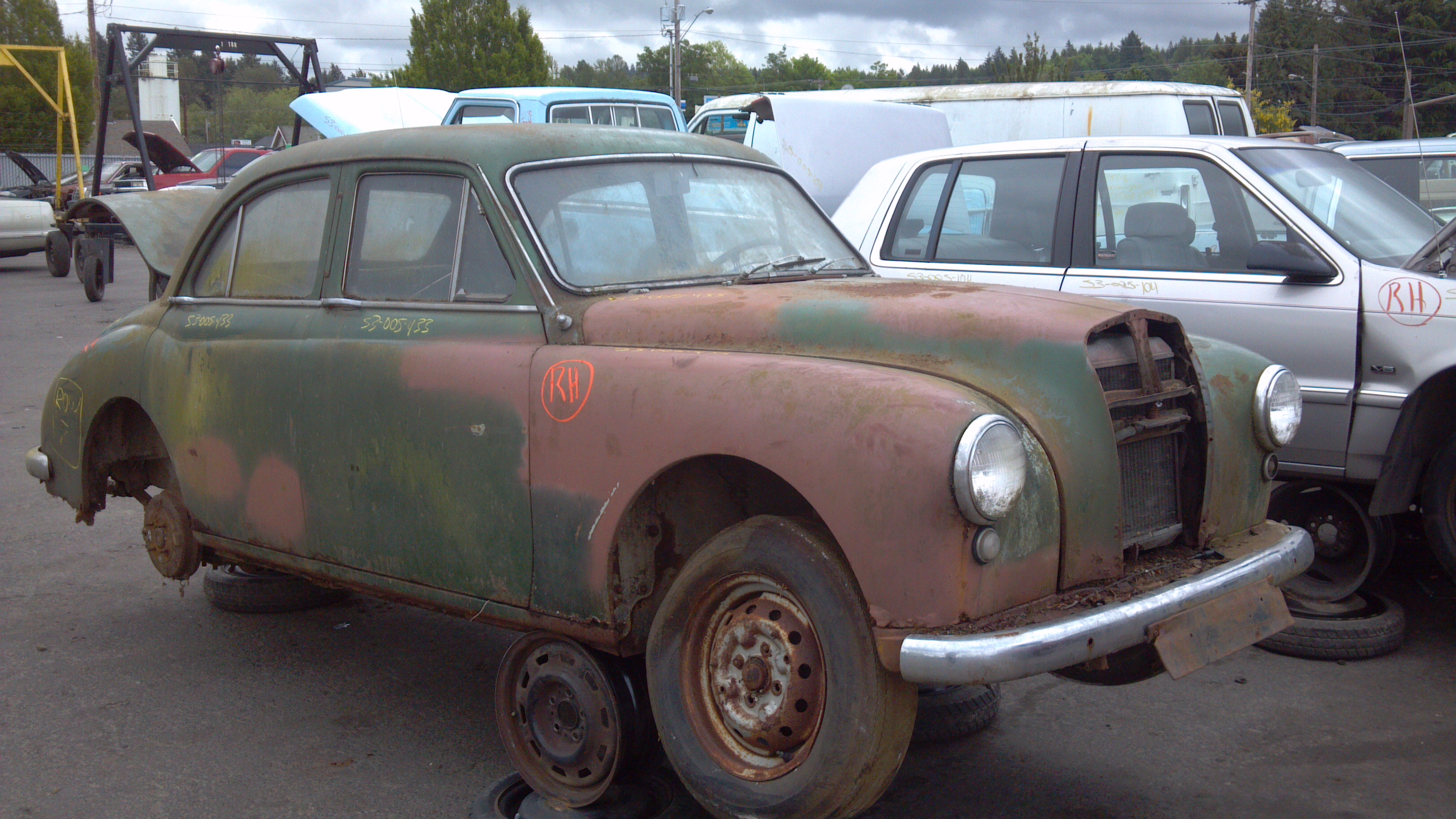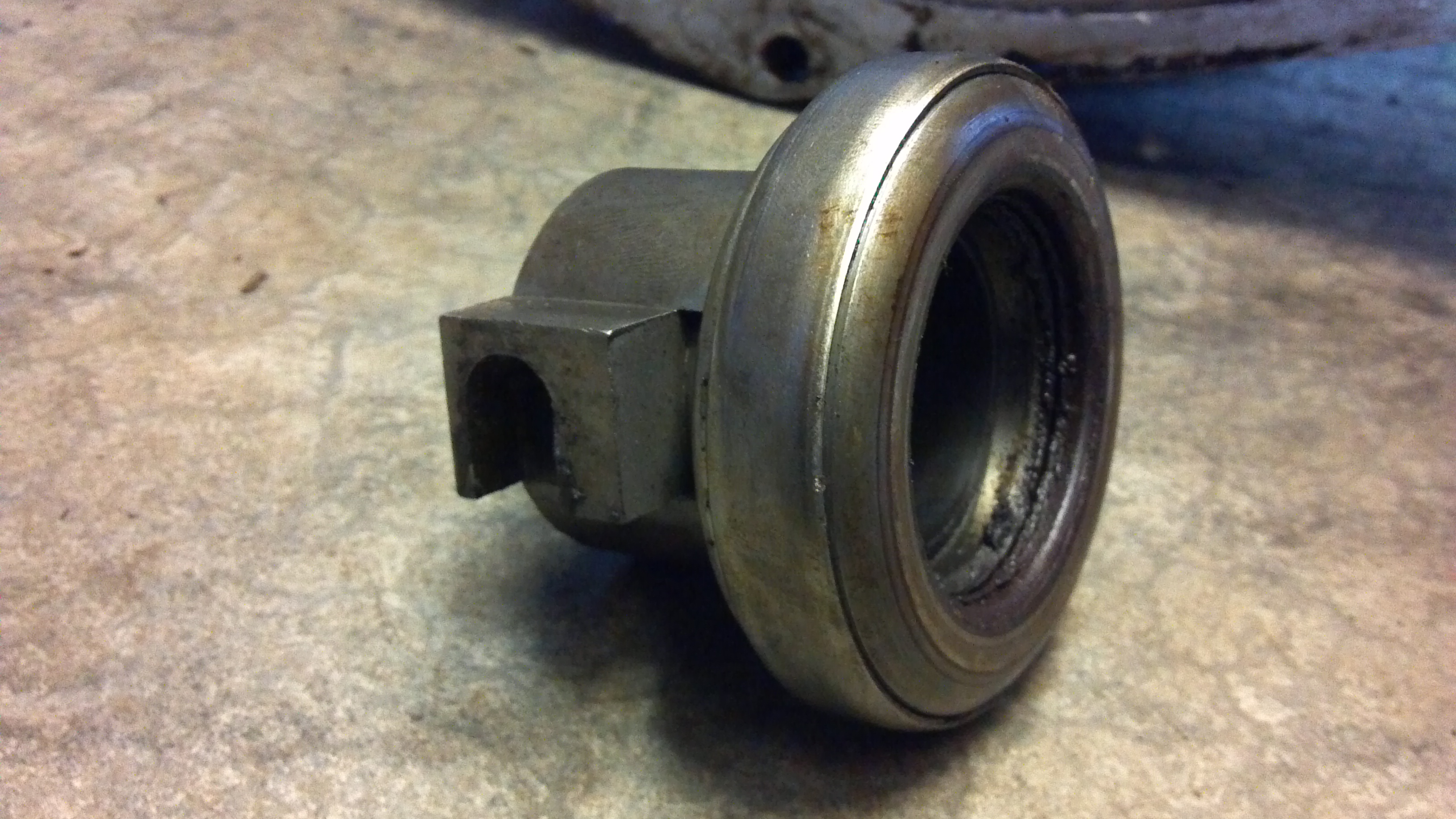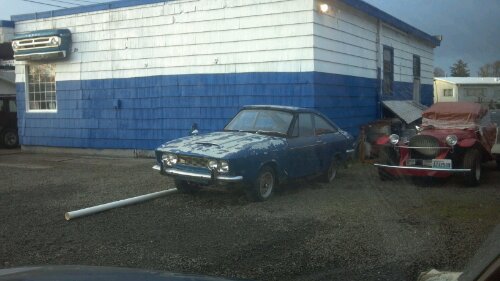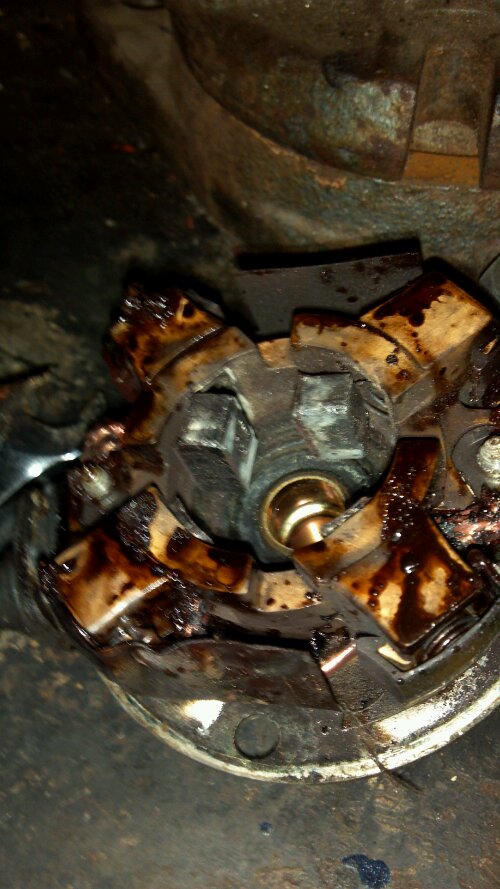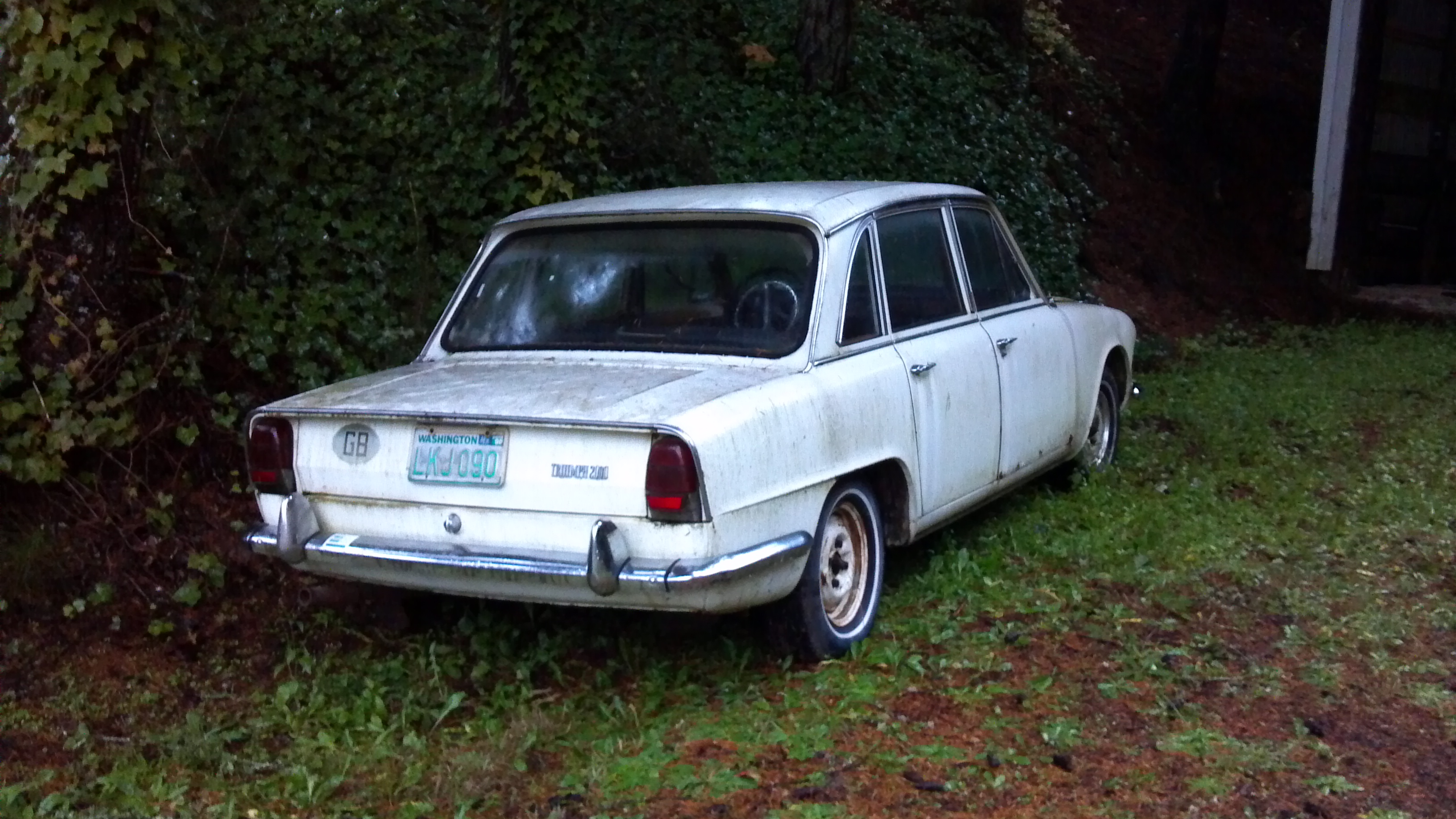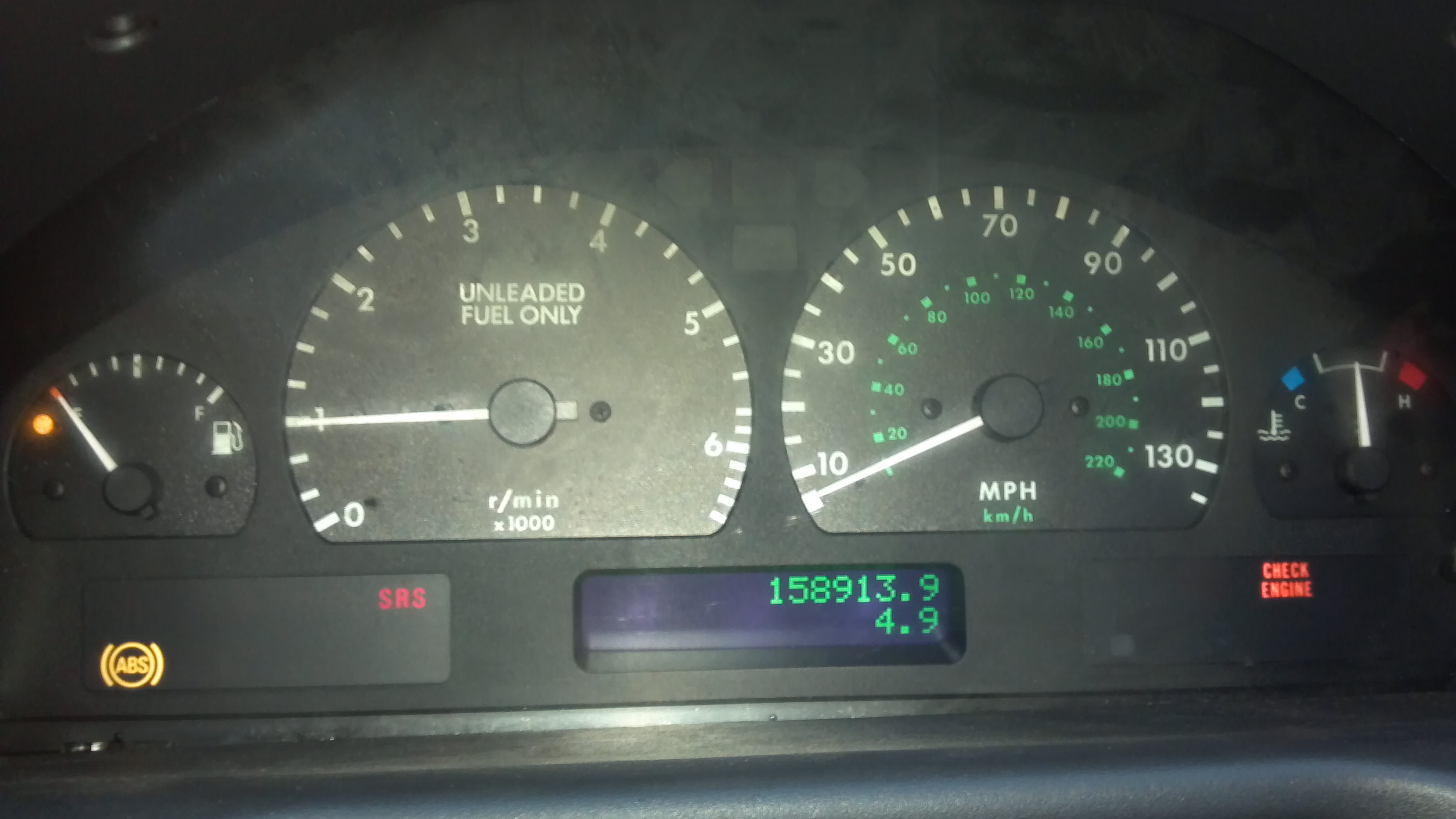So you’re wandering around the scrapyard, trying to avoid the greasier puddles and the guy angrily hammering away at a miscellaneous suspension part. All around you are the dullest and worst examples of the last twenty years of the automotive industry. Camrys, Accords, Escorts, Cavaliers, minivans… by the hundred. You’re looking for the one and only Range Rover in the yard, when all of a sudden you see this peeking out from the end of an aisle:
Yes, I know. A 58 MG Magnette. These are unbelievably rare anywhere in the world, but to find one in the US – and in a mediocre scrapyard – is unheard-of. Miraculously, it all seemed to be there.. well.. the paint has obviously gone walkabout, and some of the engine ancilliaries were in the (cavernous) boot.. even the awesome half-octagon speedo was still in place. The bodywork does give off an aura of “I haven’t moved since 1969”, but there’s far worse laying around.
I do hope someone does something useful with it, rather than just hanging the MG badges on their garage wall…!
